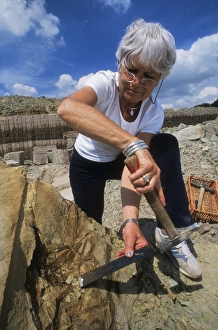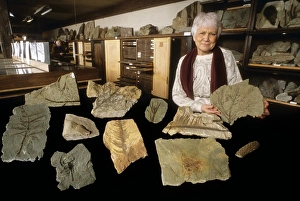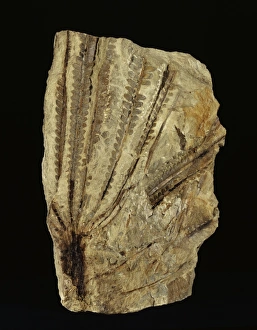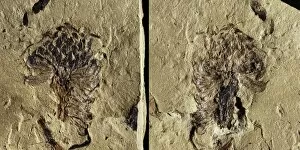Voltzia Sandstone Collection
The Voltzia Sandstone, named after the remarkable conifer fossil found within it, is a treasure trove of ancient life
All Professionally Made to Order for Quick Shipping
The Voltzia Sandstone, named after the remarkable conifer fossil found within it, is a treasure trove of ancient life. Discovered by Lea Grauvogel-Stamm, a renowned palaeontologist, this geological formation in France holds invaluable insights into Earth's history. Within the Grauvogel-Gall fossil collection lies an array of fascinating specimens that have captivated scientists and enthusiasts alike. Among them are two Gallio scorpion fossils (C018 / 9406 and C018 / 9405), showcasing the intricate details of these arachnids from millions of years ago. These fossils provide valuable clues about their evolution and behavior. Another significant find within this sandstone is the Dipteronotus fish fossils (C018 / 9403, C018 / 9402, and C018 / 9404). These well-preserved remains offer glimpses into the diverse aquatic ecosystems that thrived during prehistoric times. Studying these fish helps us understand how marine life has evolved over time. The Albertia conifer fossil (C018 / 9401) discovered here sheds light on ancient plant life. This specimen provides crucial information about conifers' role in shaping terrestrial environments millions of years ago. However, it is undoubtedly the Voltzia conifer fossils (C018/9399, C018/9398, and C018/9400) that steal the spotlight in this collection. These beautifully preserved remnants showcase intricate details of these extinct trees' structure and growth patterns. They allow researchers to reconstruct past landscapes with astonishing accuracy. Additionally present in this sandstone formation is the Schizoneura horsetail fossil (C018/9397), which adds another layer to our understanding of prehistoric flora diversity. Thanks to Lea Grauvogel-Stamm's meticulous work as a palaeontologist and her discovery at Voltzia Sandstone site; we can now delve deeper into the mysteries of our planet's past.


















